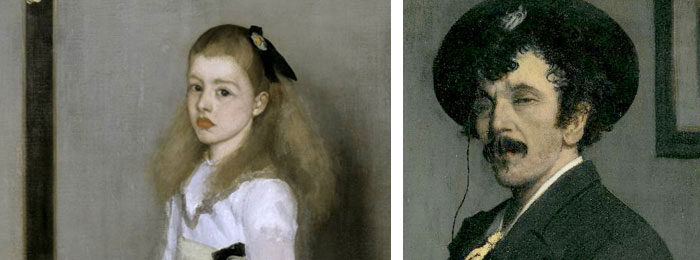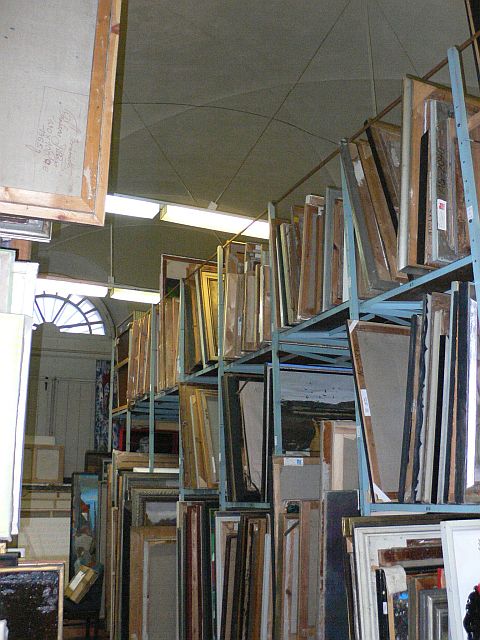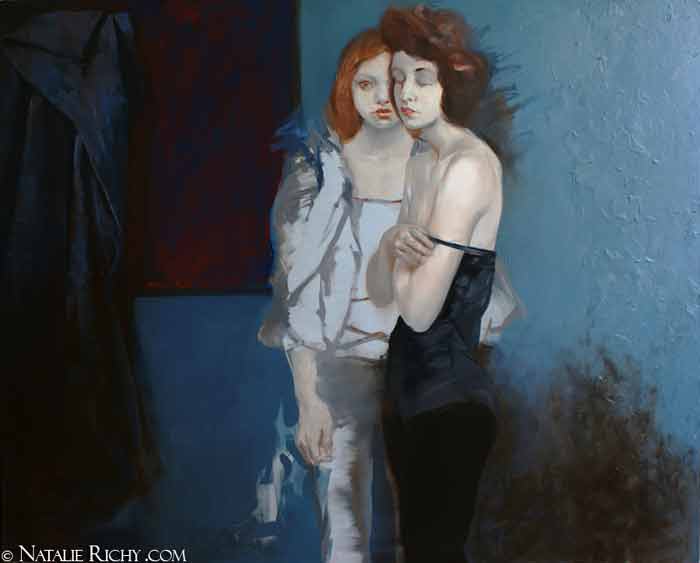On 9 Aug, 2015 With
Whistler’s Oil Painting Technique Whistler’s approach to portraiture in his late maturity was described by one of his sitters, Arthur J. Eddy, who posed for the artist in 1894: “He worked with great rapidity and long hours, but he used his colours thin and covered the canvas with innumerable coats of paint. The colours increased in depth and intensity as the work progressed. At first the entire figure was painted in greyish-brown tones, with very little flesh colour, the whole blending perfectly with the greyish-brown of the prepared canvas; then the entire background would be intensified a little; then the figure made a little stronger; then the background, and so on from day to day and week to week, and…
Read More
On 5 Aug, 2012 With
Oil painting materials: CANVASES, STRETCHERS AND PANELS You should have plenty of canvas on hand, and it would be well if you had it all stretched ready for use. Many a good day’s work is lost because of the time wasted in getting a canvas ready. It is not necessary to have many kinds or sizes. It is better in fact to settle on one kind of surface which suits you, and to have a few practical sizes of stretchers which will pack together well, and work always on these. You will find that by getting accustomed to these sizes you work more freely on them. You can pack them better, and you can frame them more conveniently, because one frame…
Read More
On 4 Aug, 2011 With
This Video shows the creation of the figurative painting. The canvas is toned with a thin layer of oil imprimatura, and the two figure drawing is done in sanguine. The oil painting approach is one of simplification of form and colour. In contrast to the clarity with which Natalie describes faces, details of the dress and drapery are done in loose brushstrokes and are stylised impressionistically. The composition of the painting is located in fictive surroundings. The elegant blue colours in the painting suggest nostalgia, which ads imaginative and aesthetic significance. Natalie brought to this figurative picture a modern sensibility, impressionistic effects and painterly fluency.
Read More
On 29 May, 2010 With
Having spent several years painting – and making just about every mistake possible – I wanted to compile a list of tips and tricks to help others enjoy painting as much as I do. So here it is! Most of these tips come from my own direct experience or from students I have worked with in the past. Certainly, there are enough tips out there to fill an entire book, but I wanted to focus on just those that are helpful for the real beginner. 1. Be Yourself What kind of an artist do you want to be? I encourage all my students to explore different techniques and various styles on their journey into art, but usually there are one…
Read More
On 7 Oct, 2009 With
Canvas is a sturdy plain woven fabric used to make tents, sails, marquees, backpacks, canoes, trampolines and tarpaulin, all of which are for outside use but (linen) canvas replaced wooden panels as the favoured medium for oil painting artists around the time of the 17th century. Historically, canvas was made from hemp, before being replaced by linen, but more common these days is cotton canvas due to it being economical and versatile. Canvas comes in two forms, plain and duck, the latter being more tightly woven and used extensively for outdoor applications, such as clothes, camping and sailing. In the 20th century, cotton canvas replaced linen canvas as the most popular painting medium, although linen canvases are still used to…
Read More
On 25 Jan, 2006 With
Creativity is a tricky endeavor. To get the right look, you need the right materials. As any artist knows, anything can serve as a canvas, but for the truly exquisite look, you need something special. In this short guide, we’ll explain some of the art and craft products available and some possible applications for these products. Curious iridescent paper is certainly one of the oddest products on the market today. Normally, embossed iridescent paper is not so much a paper, but more like plastic or a thin, flexible and colorful metal, and as such, is well suited for sculpting and other crafts. Iridescent paper is often made by foil stamping and lasers on light-sensitive chemicals, and can only be used…
Read More




